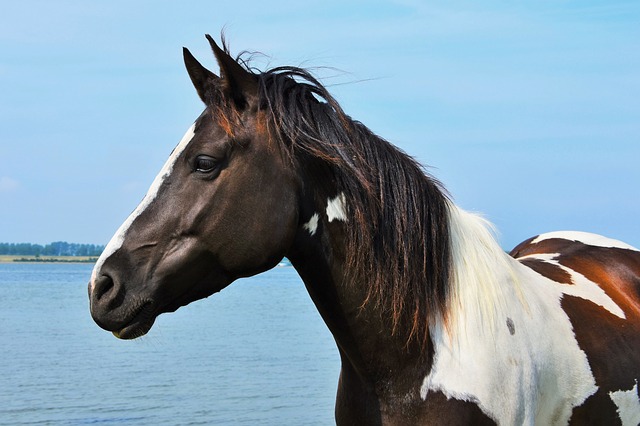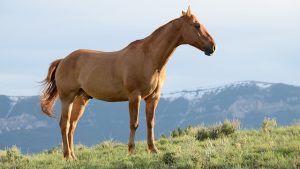The word pinto refers to a marked or spotted horse, a description first applied to the spotted descendants of the horses of the Spanish conquerors. Sometimes, though less correctly, animals of this color are referred to as piebald, skewbald, and calico.
Origin and Native Home
Spotted or Pinto horses first arrived in the New World with the Spanish conquistadores. From that day forward, animals of this color played a leading role in the development of the West. Many of them were captured and used as the highly prized riding horses of the American Indians. Later, they were found among the feral horses of the West; and, most important, through the years many of them have been used as stock horses.
Pinto Characteristics
The most distinctive characteristic of the Pinto horse is its color The perfectly marked representative is half color or colors and half white, with many spots well placed. The two distinct pattern markings arc: Overo and Tohiana.
The spots may range in size from two to twelve inches across, and they may or may not be uniform in placement, size, and regularity of shape. Thus, Pinto horses are renowned for their vari-colors and appeal. The height ranges from 14-1 to 16-2 hands, and the weight from 750 to 1,300 pounds.
In conformation, the best representatives of the breed are comparable to the type of any well-bred saddle horse of any breed. The glass eye is a part of the Pinto lineage and is not to be discounted. Animals under 14 hands or of pony or draft horse blood are disqualified from registry.
Adaptation and Use
Colonel F. W. Koester has well summarized the adaptation and use of the Pinto horse in the following statement: There is the Pinto pony—long the pride and joy of millions of American youth. We find Pintos, too, among the cow ponies and polo ponies, jumpers, hunters, and other sporting types. Again, among the pleasure types such as trail horses, hacks, and particularly parade horses, the Pinto enjoys wide and deserved popularity.” In brief, the Pinto is adapted for use for any light-horse purpose, but it is especially superb as a show, parade, novice, and pleasure animal.





